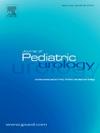Comparing binary & ordinal definitions of urinary & stool continence outcomes: Data from the National Spina Bifida Patient Registry
IF 2
3区 医学
Q2 PEDIATRICS
引用次数: 0
Abstract
Introduction
The National Spina Bifida Patient Registry (NSBPR) assesses bladder and bowel incontinence using ordinal categories, but prior NSBPR analyses employed binary classification. Our aims were to 1) perform the first NSBPR analysis of bladder and bowel incontinence as ordinal outcomes to compare to the binary definition and subject variables; 2) explore the correlation of incontinence with undergarment usage, and 3) assess incontinence status following continence surgeries.
Methods
Data from NSBPR participants’ most recent clinic visit from 2013 to 2020 were analyzed. Ordinal categories of incontinence were compared to previously used binary definitions. Incontinence surgical outcomes were analyzed for those with data at least three months post-operatively. Chi-square tests evaluated associations among categorical variables. Univariate and ordinal logistic regression models were used to test associations of ordinal incontinence status with patient and condition factors. Statistical tests were 2-sided; p values < 0.05 were considered significant.
Results
Analysis of 7217 individuals using ordinal incontinence outcomes showed little difference from previously used binary outcomes. The final multivariable logistic regression models with ordinal multinomial outcomes showed that associations of incontinence with age, sex, race/ethnicity, health insurance, level of lesion, and continence management technique were similar to prior studies. Among those reporting never being incontinent of both bladder and bowel, 14% reported using protective undergarments. Of the 500 individuals who had bladder outlet surgery, 38% reported never being incontinent of urine. Of 1416 individuals who had appendicostomy (ACE) bowel surgery, 48% reported never being incontinent of stool.
Discussion
Our current analysis showed that ordinal continence outcome classification had similar continence findings as previous studies using the binary definition of continence. Expanding the binary definition of continence to include monthly episodes of incontinence did not greatly increase the proportion of continent individuals and, therefore, would have not likely made meaningful differences in continence outcomes in prior NSBPR analyses. However, it is known that even mild incontinence can affect quality of life, therefore, capturing any level of incontiennce is of clinical importance. Confirmation of the association of continence outcomes with sociodemographic, condition-related, and interventional factors with both approaches further validates previous analyses using the binary definition of continence.
Conclusion
The previously used binary definition of bladder and bowel continence appears robust. Undergarment choice was a poor surrogate for reported incontinence. After bladder and bowel continence surgeries, 38% and 48%, respectively, reported never being incontinent.
比较大小便失禁结果的二元定义和序数定义:来自全国脊柱裂患者登记处的数据
导言:美国国家脊柱裂患者登记处(NSBPR)采用顺序分类法评估膀胱和肠道失禁情况,但之前的 NSBPR 分析采用的是二进制分类法。我们的目标是:1)首次将膀胱和肠道失禁作为序数结果进行 NSBPR 分析,与二进制定义和受试者变量进行比较;2)探讨失禁与内衣使用的相关性;3)评估失禁手术后的失禁状况。方法 我们分析了 NSBPR 参与者在 2013 年至 2020 年期间最近一次就诊的数据。将尿失禁的顺序类别与之前使用的二元定义进行了比较。对术后至少三个月的尿失禁手术结果进行了分析。卡方检验评估了分类变量之间的关联。单变量和序数逻辑回归模型用于检验尿失禁状态序数与患者和病情因素之间的关联。统计检验均为双侧检验;P 值为 0.05 时为显著结果。使用顺序多项式结果的最终多变量逻辑回归模型显示,尿失禁与年龄、性别、种族/民族、医疗保险、病变程度和尿失禁管理技术的关系与之前的研究相似。在报告从未出现过膀胱和大便失禁的患者中,有 14% 的人报告使用了保护性内衣。在 500 名接受过膀胱出口手术的患者中,有 38% 的人表示从未尿失禁过。讨论我们目前的分析表明,顺序性尿失禁结果分类与之前使用二元性尿失禁定义的研究结果相似。将大小便失禁的二元定义扩展到包括每月一次的大小便失禁并不会大幅增加大小便失禁患者的比例,因此,在之前的 NSBPR 分析中,大小便失禁结果可能不会产生有意义的差异。然而,众所周知,即使是轻微的尿失禁也会影响生活质量,因此捕捉任何程度的尿失禁都具有重要的临床意义。这两种方法都证实了尿失禁结果与社会人口学、病情相关因素和干预因素的关联,进一步验证了之前使用二元尿失禁定义进行的分析。内衣选择不是尿失禁报告的替代指标。膀胱和肠道失禁手术后,分别有 38% 和 48% 的人表示从未失禁。
本文章由计算机程序翻译,如有差异,请以英文原文为准。
求助全文
约1分钟内获得全文
求助全文
来源期刊

Journal of Pediatric Urology
PEDIATRICS-UROLOGY & NEPHROLOGY
CiteScore
3.70
自引率
15.00%
发文量
330
审稿时长
4-8 weeks
期刊介绍:
The Journal of Pediatric Urology publishes submitted research and clinical articles relating to Pediatric Urology which have been accepted after adequate peer review.
It publishes regular articles that have been submitted after invitation, that cover the curriculum of Pediatric Urology, and enable trainee surgeons to attain theoretical competence of the sub-specialty.
It publishes regular reviews of pediatric urological articles appearing in other journals.
It publishes invited review articles by recognised experts on modern or controversial aspects of the sub-specialty.
It enables any affiliated society to advertise society events or information in the journal without charge and will publish abstracts of papers to be read at society meetings.
 求助内容:
求助内容: 应助结果提醒方式:
应助结果提醒方式:


